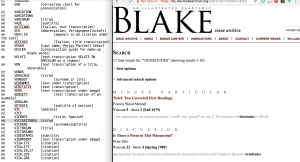Posture Parallels in Visions of the Daughters of Albion
During my archive work this past fall, I was asked to markup Copies D and L of Visions of the Daughters of Albion (1793). At the time, I had also recently reread Visions for other research, and it lead contemplating about what Blake attempted to convey through only illustration.
Continue reading
